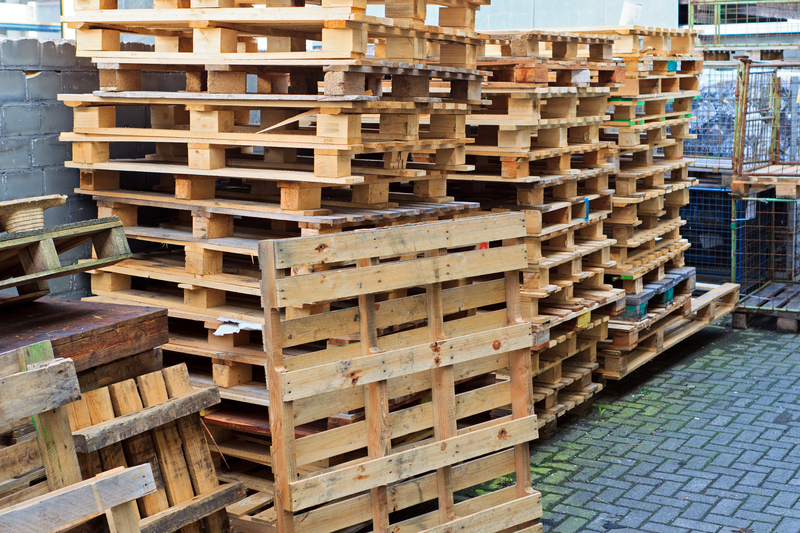Navigating the Future of Cardboard Disposal and Packaging Waste
In an era where e-commerce reigns supreme and consumer demand for fast, reliable shipping continues to soar, a new challenge emerges: what happens to all the cardboard and packaging waste left in the wake of our purchases? The sustainability of our packaging waste management is under scrutiny, and as businesses and individuals, navigating the future of cardboard disposal has never been more important. This comprehensive guide explores innovative solutions, current challenges, and practical strategies for reducing the impact of cardboard and packaging waste on our planet.
Understanding the Cardboard Waste Problem
Cardboard disposal is a double-edged sword. On one hand, corrugated cardboard is highly recyclable, with the U.S. alone recycling about 96.4% of cardboard as of 2021. Yet, the sheer volume generated from retail packaging, online deliveries, and logistics operations presents a vast environmental challenge. A significant portion of this waste still ends up in landfills, where it contributes to methane emissions and resource depletion.
The Surge in Packaging Waste
- E-commerce boom: The exponential growth of online shopping has led to a surge in shipping boxes and packaging products.
- Consumer convenience: Increased reliance on fast, single-use packaging adds to the challenge.
- Globalization: Products are shipped across larger distances, often double-packaged to protect goods.
- Short product life cycles: Constant turnover leads to higher waste volumes.
The Environmental Toll of Cardboard and Packaging Waste
While cardboard is biodegradable, it is not without its problems. Excessive cardboard in landfills can release greenhouse gases during decomposition, waste forestry resources, and require intensive energy for manufacturing and recycling processes. The improper disposal of packaging materials also exacerbates global waste management issues, overwhelming local disposal systems and contaminating recycling streams with non-recyclable components.

Innovative Solutions Shaping the Future of Cardboard Disposal
With environmental stewardship becoming a business imperative, the packaging industry is undergoing transformative changes. Several innovations and best practices are emerging to address the challenges of cardboard and packaging disposal.
Advances in Cardboard Recycling Technologies
- Automated sorting systems: Machine learning and AI-driven robots now separate cardboard waste efficiently from mixed recyclables, ensuring higher purity rates.
- Chemical recycling: Innovative processes break down contaminated or composite packaging into basic fibers, allowing reuse in new cardboard products.
- Closed-loop systems: Manufacturers are partnering with recycling facilities to create a circular system where old packaging becomes the feedstock for new materials.
The Rise of Sustainable Packaging Alternatives
The future of packaging waste management is not limited to disposal; it starts with design. The proliferation of eco-friendly packaging solutions is reducing the reliance on traditional cardboard boxes.
- Minimalist packaging: Reduces material usage while still ensuring product protection.
- Reusable containers and envelopes: Innovative, returnable packaging is gaining traction for e-commerce shipments.
- Biodegradable and compostable materials: Some suppliers now offer materials that break down naturally, reducing landfill burdens.
Consumer Responsibility in Cardboard Disposal
Consumers play a pivotal role in the responsible management of cardboard and packaging waste. Proper disposal and recycling practices can divert significant amounts of waste from landfills.
Tips for Responsible Cardboard Disposal
- Flatten boxes: Save space and facilitate recycling by breaking boxes down.
- Remove contamination: Ensure all plastic, foam, and food residues are removed.
- Check local recycling guidelines: Different municipalities have specific rules on what can be recycled.
- Reuse cardboard creatively: From storage bins to kid's crafts, cardboard has endless second-life uses.
Why Proper Sorting Matters
Incorrectly mixed waste can compromise recycling streams. By sorting packaging waste at the source--separating cardboard from plastics, composites, and other materials--consumers and businesses can maximize recycling rates and reduce landfill loads.
The Business Imperative: Redesigning Packaging Systems
Sustainability is now central to corporate responsibility. Brands and manufacturers must consider both the environmental impact of their packaging and the efficiency of their disposal systems.
Integrating Recyclability Into Packaging Design
- Easy-to-recycle materials: Favoring single-material, corrugated fiberboard and eliminating mixed materials simplifies disposal for end-users.
- Clear labeling: Providing disposal instructions helps consumers do the right thing.
- Right-sizing: Designing packaging to fit products more snugly reduces materials and transportation carbon footprints.
The Role of Extended Producer Responsibility (EPR)
More countries are implementing EPR policies that require producers to take responsibility for the lifecycle of their packaging, from design to end-of-life management. This encourages brands to create packaging solutions that are easier to reuse, recycle, or safely dispose of.
Key Trends Redefining Packaging Waste Management
1. The Circular Economy in Packaging
Embracing a circular economy for packaging waste means keeping materials in use for as long as possible. This approach prioritizes:
- Designing out waste and pollution
- Reusing and refurbishing existing products
- Recycling materials back into the supply chain
2. Smart Packaging and Digital Tracking
Emerging technologies are enabling greater traceability in packaging--RFID tags, QR codes, and blockchain solutions can help ensure that packaging is managed responsibly at every stage of the supply chain and after consumer use.
3. Government Policies and Industry Standards
Regulation is becoming a powerful driver of better practices in cardboard disposal and packaging waste management. From bans on certain single-use products to incentives for recycled content, government actions are spurring corporate innovation and consumer awareness.
Future-Ready Strategies for Reducing Packaging Waste
Switching to Renewable Materials
Exploring alternatives to traditional cardboard--such as mushroom packaging, molded pulp, and bio-plastics--can further reduce the reliance on forest resources and support circular economies.
Collaborative Collection Schemes
Innovative programs like curbside pickup for bulk packaging waste, retailer take-back schemes, and community drop-off points enable more convenient and efficient collection of cardboard and packaging for recycling or reuse.
Education and Behavior Change
Ongoing education initiatives are crucial. Both businesses and local governments must empower people with the knowledge and incentives to improve sorting, reduce contamination, and appreciate the value of responsible packaging waste management.
Challenges and Opportunities Ahead
The Contamination Problem
A major challenge in cardboard recycling is contamination--oily pizza boxes, food-soiled packaging, and mixing with plastics can render batches unrecyclable. Investing in better consumer education and improved collection technologies will be essential.
Scaling Up Infrastructure
As packaging waste increases, so does the need for local and regional recycling capacity. Support for recycling businesses, investment in advanced sorting technology, and partnerships between private and public sectors will shape future success.
The Role of Data and Analytics
Data-driven insights into material flows, consumer behavior, and recycling rates will inform smarter strategies for managing cardboard and packaging waste. Analytics can pinpoint inefficiencies, inform policy, and help businesses meet sustainability goals.
The Roadmap for a Greener Tomorrow
The future of cardboard disposal and packaging waste management depends on collective action:
- Innovative product and packaging design that minimizes environmental impact from the outset
- Robust recycling infrastructure capable of handling the increasingly varied waste streams
- Strong regulatory frameworks to support circular waste management
- Active participation from consumers, businesses, and governments alike
As the world continues to grow ever more connected through commerce, the responsibility to manage the waste that connection brings must be shared. By investing in smarter, greener solutions for cardboard recycling and packaging disposal, we can ensure a more sustainable future for generations to come.

Frequently Asked Questions About Cardboard Disposal and Packaging Waste
How can I make sure my cardboard gets recycled?
Flatten all boxes, remove any plastic or foam inserts, and keep the cardboard dry and clean. Check your local city or municipality's recycling guidelines, as rules can vary.
Are there alternatives to traditional cardboard packaging?
Yes! Options include reusable containers, biodegradable or compostable materials, and packaging designed to minimize waste at the source. Many companies are adopting innovative, eco-friendly solutions as part of their sustainability programs.
What happens to recycled cardboard?
Collected cardboard is processed at recycling facilities, where it is cleaned, pulped, and remanufactured into new cardboard products. This closed-loop process reduces resource use and environmental impacts significantly.
Conclusion: Leading the Way in Sustainable Packaging Waste Management
As we navigate the future of cardboard disposal and strive to effectively manage packaging waste, the way forward is clear--collaboration, innovation, and a relentless commitment to sustainability. Whether through rethinking packaging design, educating consumers, investing in better infrastructure, or supporting government policies, every stakeholder has a role to play.
This journey is not just about reducing the volume of waste, but about redefining our relationship with materials--valuing them, stewarding them, and finding creative new uses for what was once considered trash. Together, we can build a world where cardboard and packaging waste is no longer a problem but a resource, contributing to a healthier, more resilient planet.